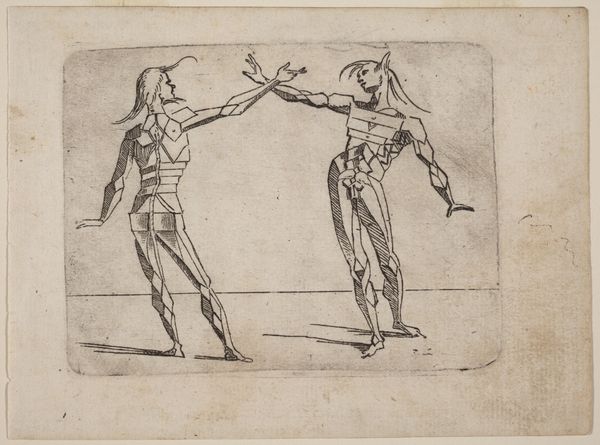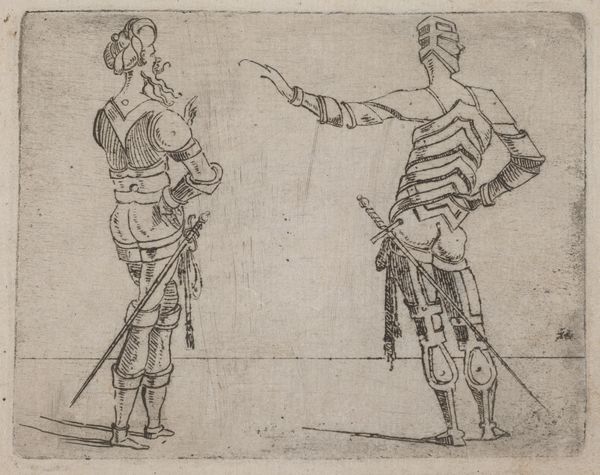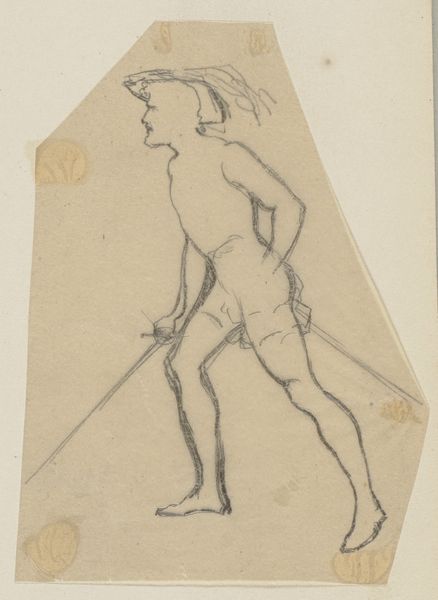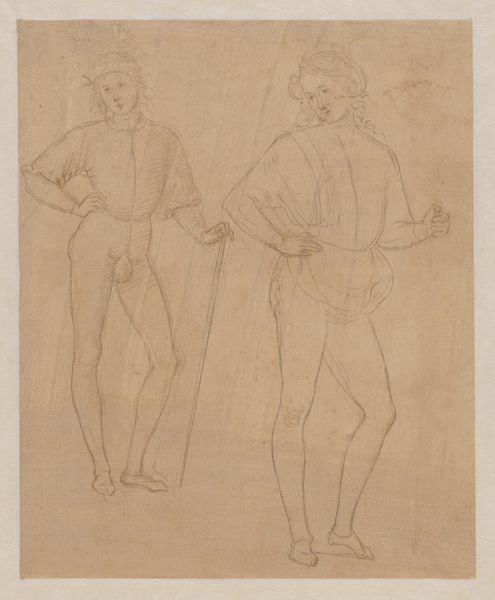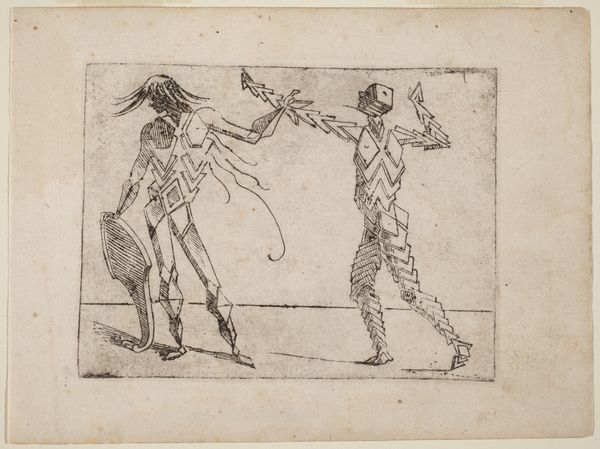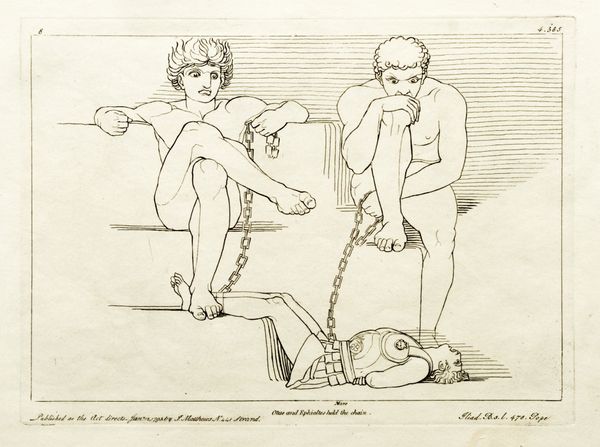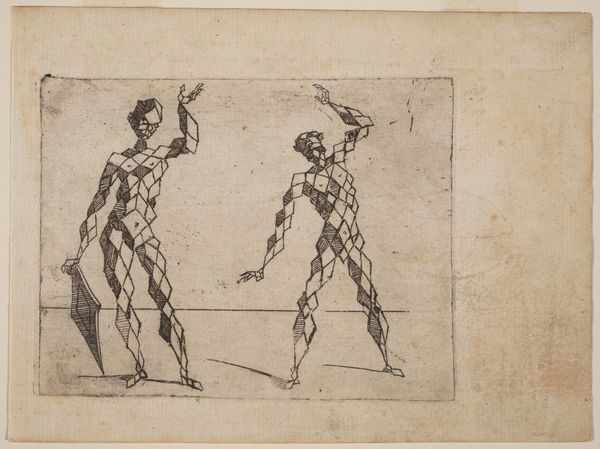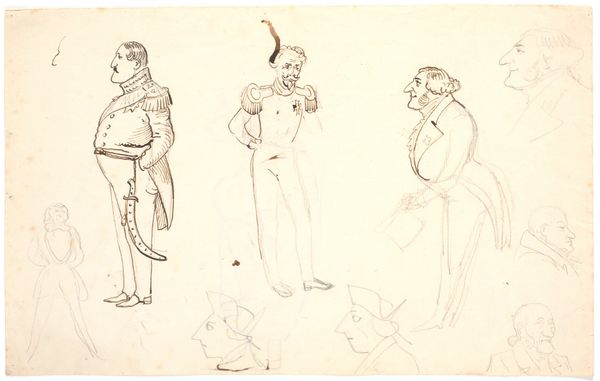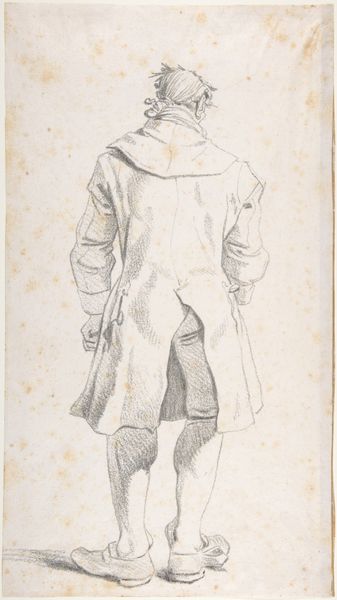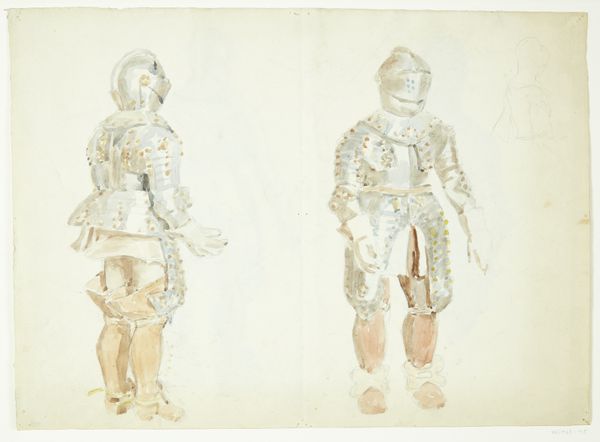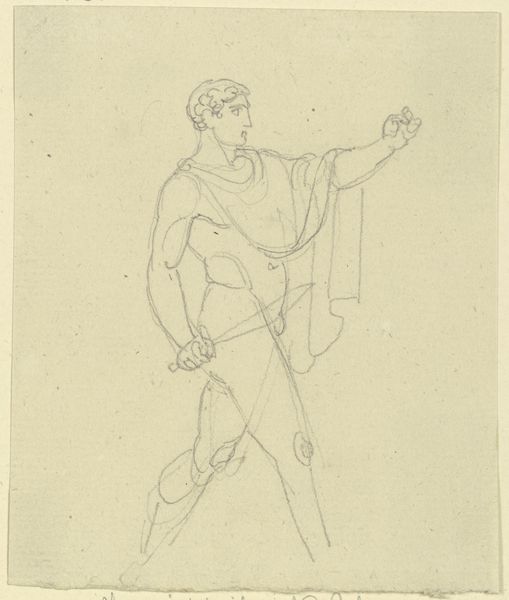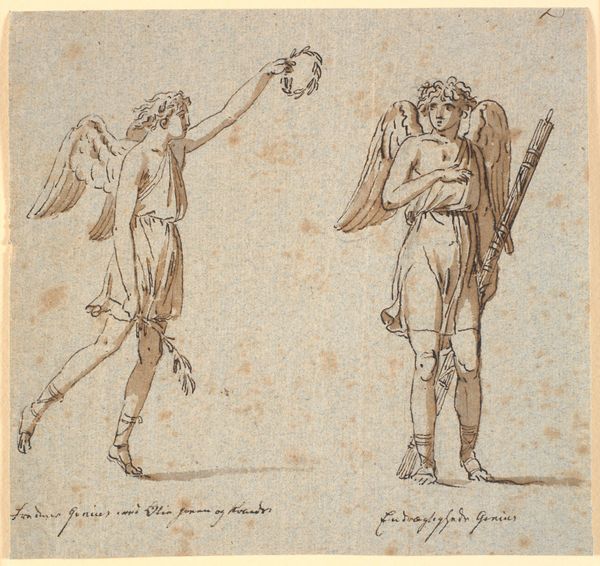
drawing, ink, pen
#
drawing
#
pen sketch
#
figuration
#
ink
#
pen
#
history-painting
Dimensions: 194 mm (height) x 196 mm (width) (bladmaal)
Editor: So, this ink and pen drawing is called "Cimbrere" by Nicolai Abildgaard, dated somewhere between 1743 and 1809. It depicts two figures in what looks like ancient garb. It feels... archaeological, almost like a page from a textbook. What jumps out at you when you look at it? Curator: The process of its creation is fascinating. Look closely at the rapid, confident strokes. This isn't just a drawing; it's a record of thought, of the artist grappling with the materials at hand. The pen and ink, easily sourced, point towards accessibility. Was this for an elite patron, or meant for wider dissemination? Editor: That’s interesting. I hadn’t considered its accessibility. I just assumed historical drawings were exclusively for the upper class! Curator: Note the inscription at the bottom of the drawing. Who was the 'author'? What were the relations and access to books? The artist positions himself in relation to past knowledge production by citing its references. Does this reinforce or question academic traditions through its draftmanship? Editor: It’s definitely a conscious engagement with existing knowledge and ways of producing images. So it's about *how* and *why* it was made, and what materials were at hand. Curator: Precisely. We must ask how the very act of drawing and the choices around readily available media—pen and ink on paper, rather than, say, a grand oil painting—influence the meaning we extract. This challenges traditional notions of "high art" as being about rarefied materials. Editor: So, rather than seeing this simply as a historical drawing, we can analyze it as a statement about art production itself. I’ll have to look at art with new eyes now, seeing the social and economic implications of materials. Curator: Glad to encourage your perspective!
Comments
No comments
Be the first to comment and join the conversation on the ultimate creative platform.

